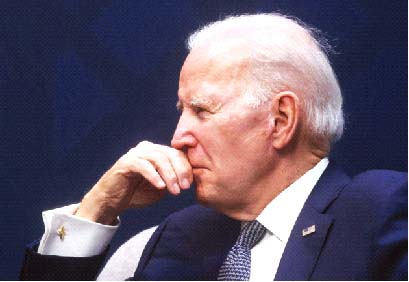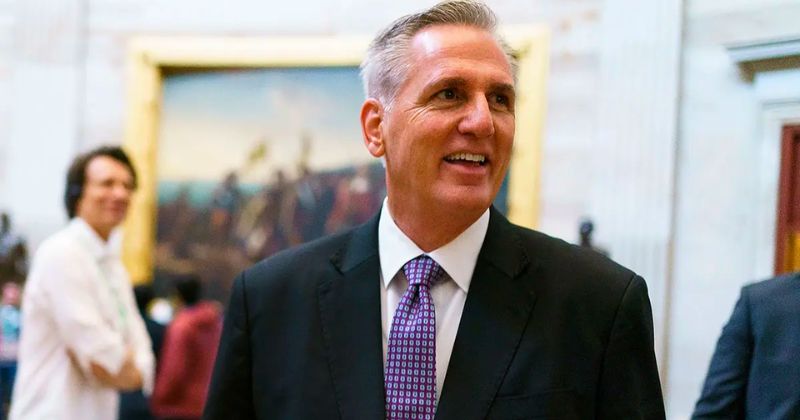करता था तो क्यूँ रह्या, अब करि क्यूँ पछताइ।
बोवै पेड़ बबूल का, अम्ब कहाँ तैं खाइ॥
This famous couplets (Doha) of Sant Kabirdas, a saint-poet from 15th-century Bharat, suggests, “While performing vile acts, one never thinks of the outcome. Now that the negative repercussions of such actions have come to light, one is feeling apologetic and guilty. What good is the repentant face now? If you sow the seeds of an acacia tree, it will bear sweet delectable mangoes.
Never-ending dilemma
While undertaking certain actions thinking it will yield immediate short-term results, one never imagines it to turn out toxic in the long term. Such outcomes undermine one’s existence and even intent.
Today’s West is facing an acute conundrum. High inflation is hitting the bottom of the pyramid. But the steps taken to curb such inflation should not lead to interest rates that may trigger a new banking crisis. Policymakers’ actions to increase interest rates to soothe the bottom of the pyramid can lead to unintended consequences.
With the rise of interest rates, there can be a possible bubble burst across all asset classes including debt, equity, and real estate where the rich invest and who are largely responsible for paying taxes and running financial markets. With the bubble bursting, the rich would suffer severe financial losses and will end up laying off millions of workers, again hitting the bottom of the pyramid.
So either way, the weakest in the West is under pressure. This eventuality is being felt and is reflected by the pressure being built on the political system as well.
‘Five PMs in last 7 years in the UK’
‘Four Prime Ministers in the last 6 years in Italy’
And the list is long. For large businesses, the perplexing choice remains between reducing costs and declining profitability. For these corporations in general, input costs have gone up due to Russian Ukraine War, manpower cost has gone up due to the Great resignation during covid and post-covid era, and supply chain issues loom large on account of China’s ZERO covid-19 Policy and sometimes due to China’s geo-political tensions with the West.
US per capita consumption is the highest in the world. With less than 5 per cent of the World’s population, the US uses one-third of the world’s paper, a quarter of the world’s oil, 23 per cent of the coal, 27 per cent of the aluminum, and 19 per cent of the copper
To top this all, deeply embedded (in the financial markets), greed-driven and propelled crypto (primarily introduced during the covid period) is creating havoc.
Some estimates suggest that as of January 2023, there are 420 million crypto users across the world. This gigantic figure is a result of last few years of crypto-boom. And why not! Crypto promised everyone the promised land with some cryptos delivering as high as 400 per cent returns in a single calendar year of 2021.
Cheap Liquidity, near zero interest rates, lack of focus on addressing supply chain issues (over-dependence on imported goods) created a chimerical environment of Midas Touch, where equities, bonds, cryptos, real estate practically everything was surging. Perils and pitfalls are now being witnessed.
Before we get deep into facts, figures and analysis, let’s re-evaluate where the world stands today.
Between 2008 (post the Great Financial Crisis) and 2018, the US pursued a simple policy of expanding its balance sheet size, by buying toxic securities issued by private entities to protect them against default. The money came in the form of incremental borrowing by the US government to support such an initiative.
Additionally, the Fed reduced interest rates, promoted consumption by households and expansion of capacities by industry on borrowed funds, leading to higher leverage. As the economy grew, limited action was taken to roll back these freebies.
In 2013, some rollbacks were undertaken partially but the markets witnessed weakness, and then the rollback plan was either halted or altered or slowed down.
When a body is put on steroids as the cure, it will experience some aches when the steroid is withdrawn. But gradual withdrawal is a must. This is what happened with the US. As the intent leading to some action of the QE (Quantitative Easing) – free support from the US Fed was about to slow down, the covid struck. With limited options in sight, the economy was supplied with even further support.
This time stimulus was through direct physical cash dole-outs. In March 2020, the Coronavirus Aid, Relief, and Economic Security Act (CARES Act) was implemented, providing Economic Impact Payments of up to USD 1,200 per adult for eligible individuals and USD 500 per qualifying child under the age of 17 in the United States.
On top of it, Up to USD 500 per month was handed over for 3 months to Employees who are facing salary loss for at least 3 consecutive months, with an average overall loss of at least 50 per cent.
Unfortunately, this was done despite the very high gross National Debt of the US. At present, the US GDP is ~ 23.5 trillion USD its National debt hovers over 31 trillion USD.
US banks are sitting on a market-to-market loss of 620 billion USD whilst FDIC, the institution that guarantees the security of USD 250,000 per account holder has a balance of 128 billion USD
Despite such a grim financial condition, the US per capita consumption is the highest in the world. With less than 5 per cent of the World’s population, the US uses one-third of the world’s paper, a quarter of the world’s oil, 23 per cent of the coal, 27 per cent of the aluminum, and 19 per cent of the copper. Americans also generate ~half of the globe’s solid waste.
When covid struck, free money doles from the Government, as well as lower interest rates (Near Zero) fueled hyper fundraising from corporates. Q2, 2020 peak of Covid Chaos, Goldman Sachs leading American investment bank reported the biggest earnings outperformance in nearly a decade. So was the case of other investment banks. The decline in interest rates created a bond rally triggering a huge upside for bond traders.
During covid consumption of services slipped down, however, consumption of goods jumped as it was believed that the mental distress of covid could be set off by the materialistic world by shopping goods online. Roughly one-third of the goods consumed in the US are produced directly or indirectly in China. Despite tariffs on logistics in 2020, going higher, due to covid, the average American continued on its buying spree.
Actions leading to Reactions
During the period of covid, all investment asset classes flourished and so did crypto. With excess time in hand and zeal to make quick money, the world started chasing Crypto.
1. Crypto has no underlying strength and is solely dependent on demand and supply. As crypto gained momentum during 2020 and 2021, market participants started taking exposure to crypto using it as collateral for lending. Some of the banks mentioned above had significant exposure to crypto and when the crypto collapse happened (cheap liquidity being withdrawn due to a rise in interest rates), the banks became insolvent leading to bankruptcy.
2. Another interesting thing that happened post-covid is the surge in US Gsec Yields as mentioned above. This led to a huge Market to Market (MTM) loss in the Investment book of the banks and financial institutions that were invested in US Government bonds or fixed coupon securities. A rise in yields leads to a drop in bond values. This is true for individuals as well as institutions holding long-dated bonds.
A further rise in yields (on account of rising interest rates) jacked up the losses and banks that were not able to raise money by selling equities (difficult in a weak equity market scenario playing out since Jan 2022), it led to insolvency leading to bankruptcy.
What everyone knows
1 The US inflation in 2019 was 1.81 per cent and stood at 6.5 per cent in Dec 2022 after hitting a high of 9.1 per cent in June 2022
2 The US average home loan rate stood at 3.2 per cent in 2019
(pre-covid) and now stands at 7.5 per cent on average
3 The 10-year US Govt bond was trading at a yield of 0.51 per cent in Aug 2020 and hit a high of 4.00 per cent just a few days back, a spike of 350 basis in two and half years
4 Genesis Global Capital, one of the largest crypto lenders with 1 billion USD in assets and 10 billion USD in liabilities filed for bankruptcy in Jan 2023
5 FTX, (much-published information) – the third-largest cryptocurrency exchange by volume, with over one million users failed and filed for bankruptcy in Nov 2022. The story of FTX was the same: a couple of billion USD in assets and 10 billion USD in liabilities. The second largest crypto exchange Coinbase is enveloped in the ominous smoke of its insolvency
6 CORE SCIENTIFIC, One of the biggest publicly traded crypto mining companies in the United States, Crypto lender Blockfi, CELSIUS NETWORK a large crypto lending company, VOYAGER DIGITAL, a cryptocurrency brokerage company, THREE ARROWS CAPITAL, The crypto hedge fund filed for bankruptcies within last 6 months. The list of failed institutions in crypto is even longer
7 As recently as March 2023, Silvergate Capital, a big lender in crypto, and one of the two main banks for the Crypto industry went bankrupt. The other major one, that supported the Crypto ecosystem, Signature Bank with 50 billion USD of assets also, went down. The story of Silicon Valley Bank or SVB, the 16th largest lender in the United States is quite popular. First Republic Bank, another major bank in the United States failed but got rescued
3. Account holders in the US banks are assured of Insurance on deposits or balances of up to 250,000 USD or below. But the US Government has extended insurance on larger amounts as well to failed bank deposit holders of Signature and Silicon Valley Bank.
There is a huge dichotomy between what people think they have and what exists. (Perceived Safety Vs RealSafety)
At the moment, the US banks are sitting on a market-to-market loss of 620 billion USD (before the 25 basis hike announced on March 22nd by the Fed, 25 basis will further worsen the situation) whilst FDIC (Federal Deposit Insurance Corp), the institution that guarantees the security of USD 250,000 per account holder has a balance of ~ 128 billion USD.
Imagine the time bomb the US banking system is sitting on. Furthermore, where does FDIC invest this 128 billion USD or a large part of it?
FDIC invests in US government bonds, whose yields have risen sharply leading to marked-to-market losses (MTM) within the FDIC portfolio as well. If interest rates don’t come off in a hurry, the worst is yet to come before it improves, rattling both Equity capital markets and the lives of people.
(Views are personal)




















Comments